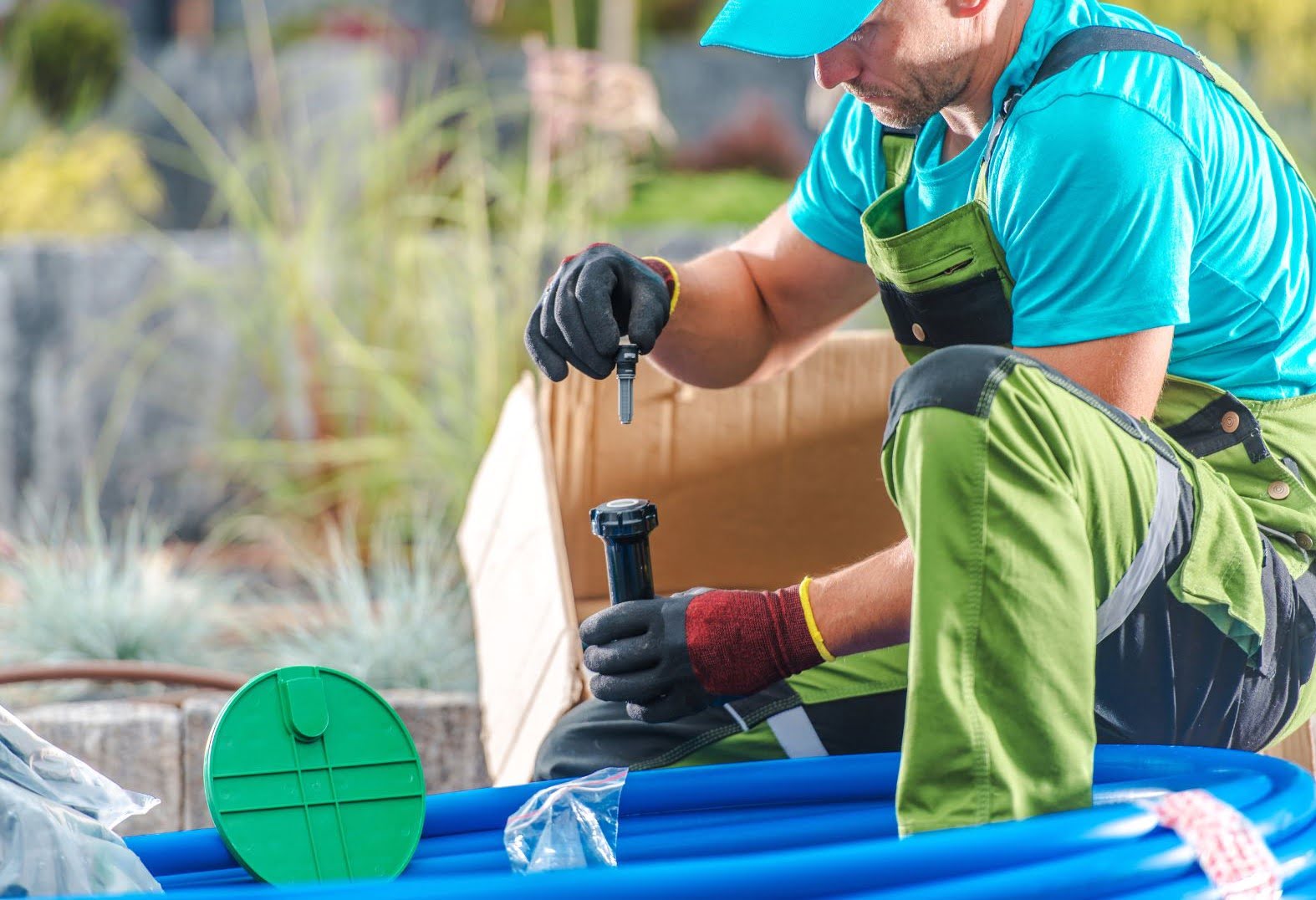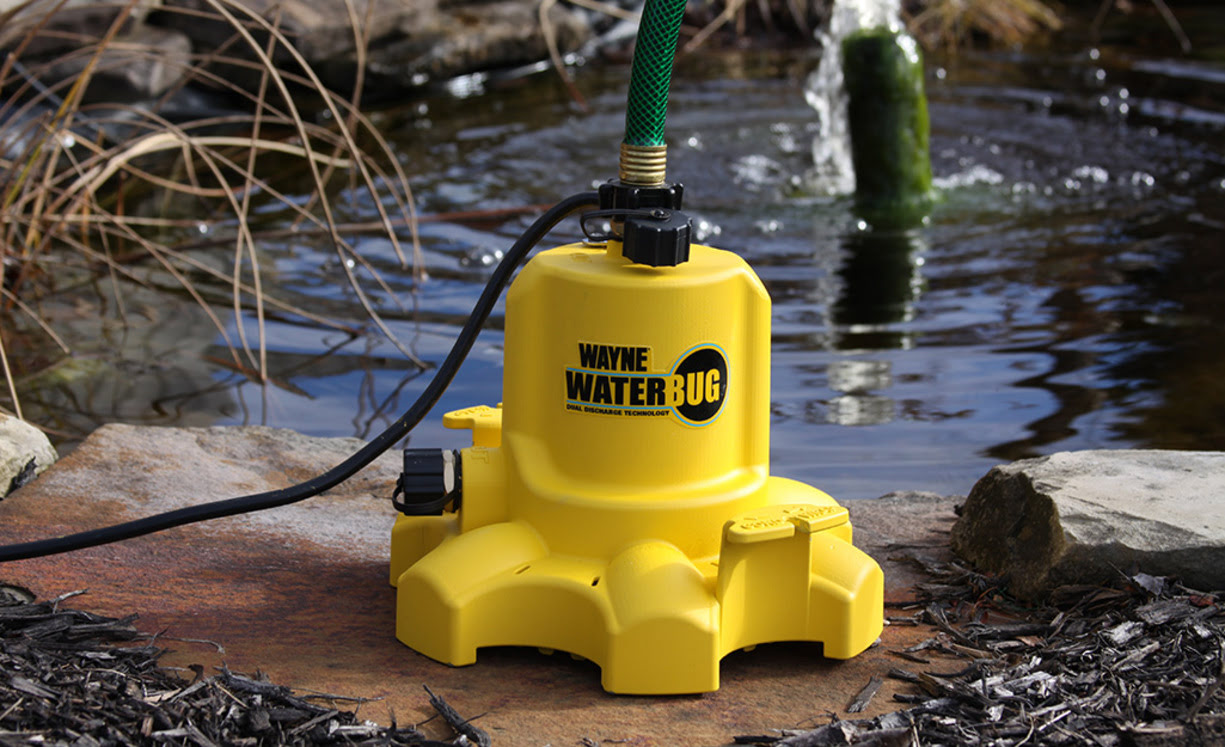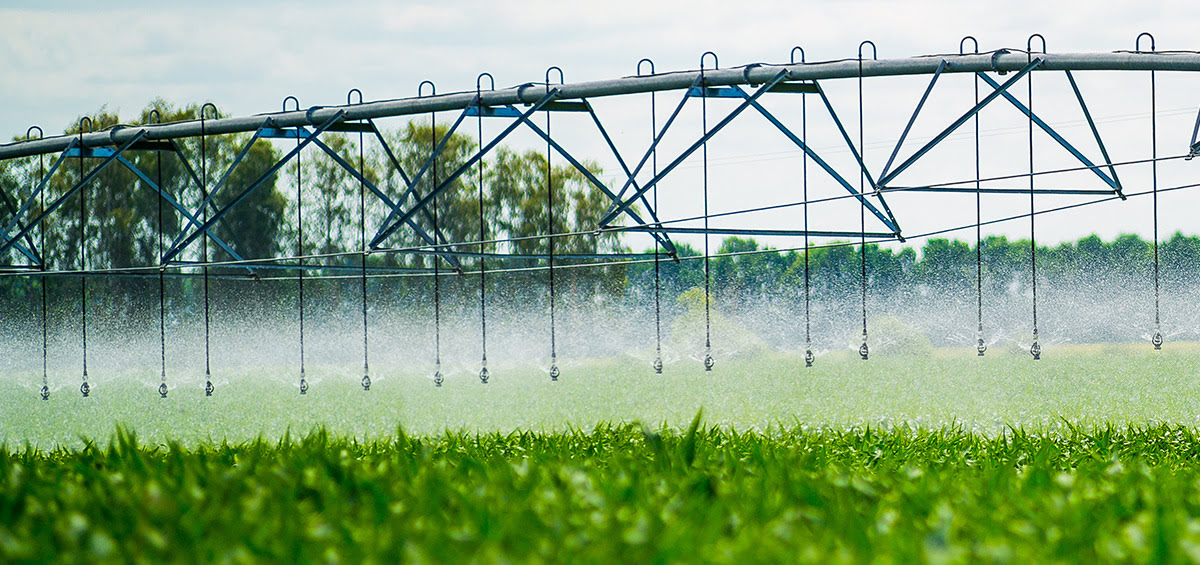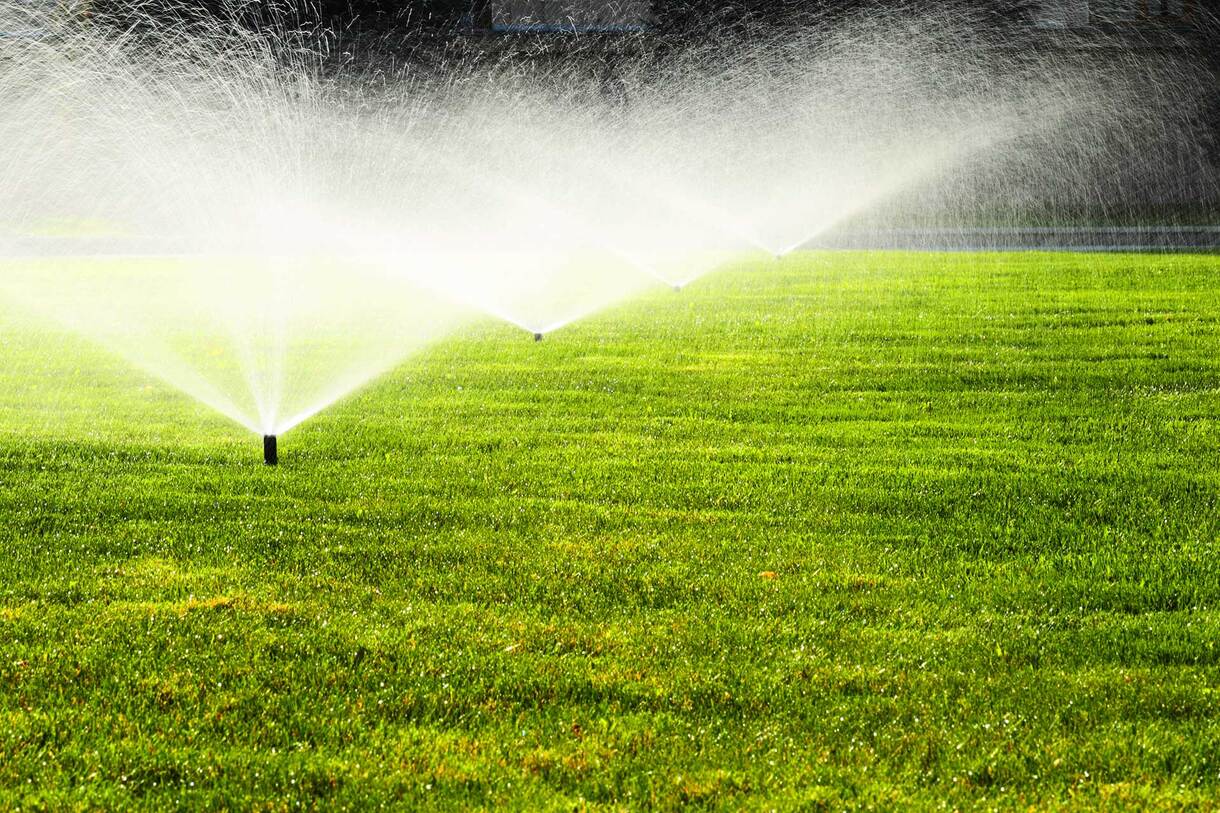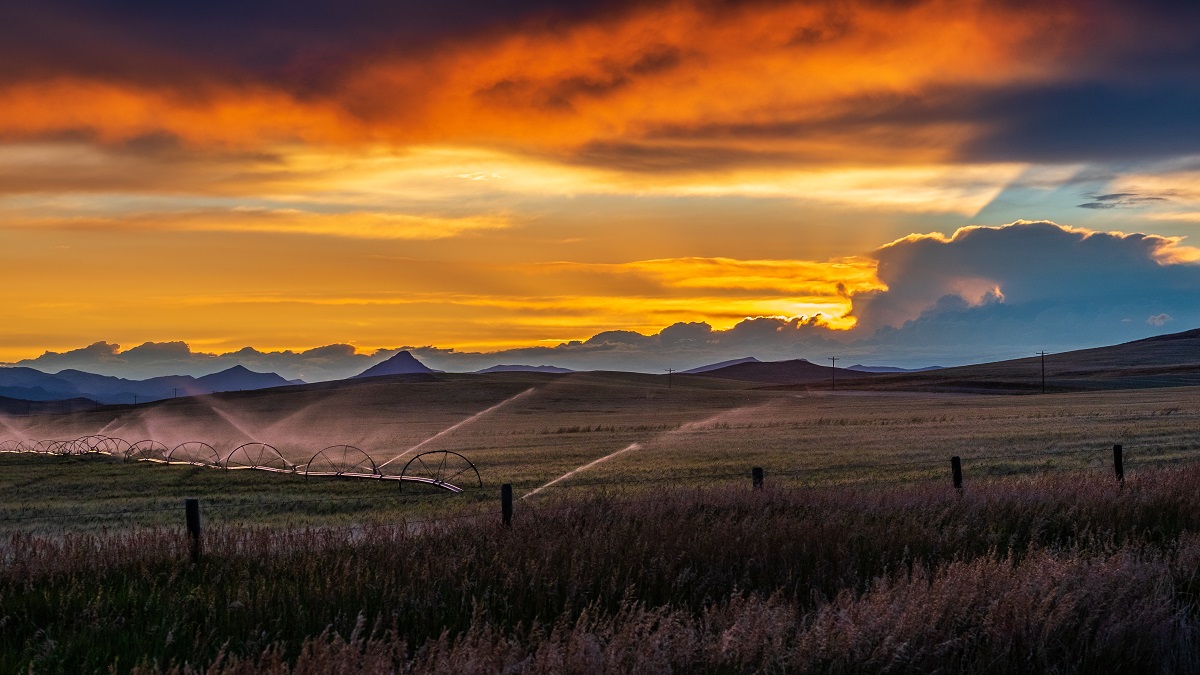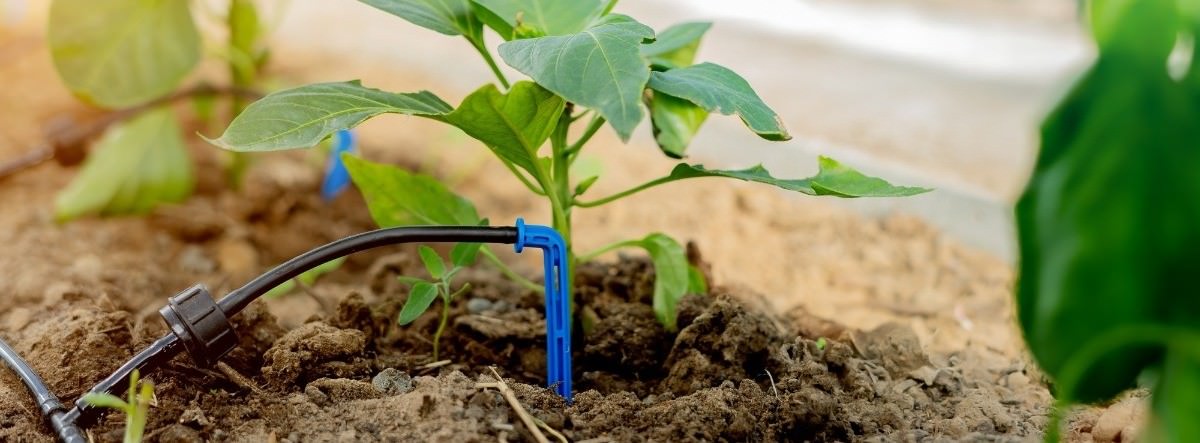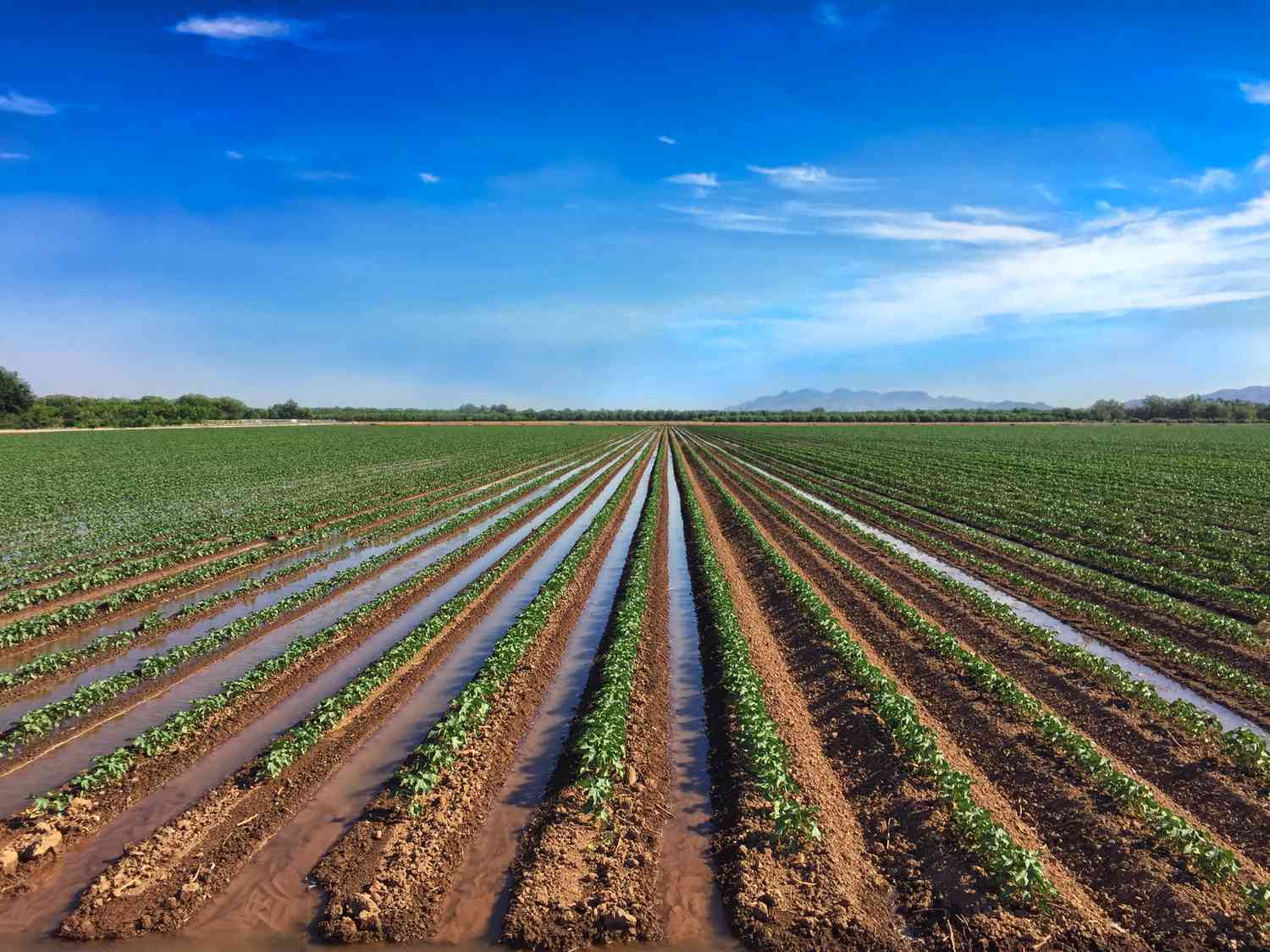Home>Gardening Basics>Tools and Equipment>What Is Subsurface Irrigation


Tools and Equipment
What Is Subsurface Irrigation
Modified: February 5, 2024
Learn about the tools and equipment used in subsurface irrigation systems, including installation and maintenance techniques. Improve your irrigation efficiency with the right tools.
(Many of the links in this article redirect to a specific reviewed product. Your purchase of these products through affiliate links helps to generate commission for Chicagolandgardening.com, at no extra cost. Learn more)
Table of Contents
- Introduction
- Definition of Subsurface Irrigation
- How Subsurface Irrigation Works
- Benefits of Subsurface Irrigation
- Drawbacks of Subsurface Irrigation
- Types of Subsurface Irrigation Systems
- Installation Process of Subsurface Irrigation Systems
- Maintenance of Subsurface Irrigation Systems
- Comparison with Other Irrigation Methods
- Conclusion
Introduction
Welcome to the world of subsurface irrigation! If you’re a homeowner, farmer, or landscaper looking for an efficient and effective way to provide water to your plants, then subsurface irrigation might just be the solution you’ve been searching for. In this article, we’ll delve into the world of subsurface irrigation and uncover its benefits, drawbacks, and installation process.
Subsurface irrigation, also known as sub-irrigation or subsurface drip irrigation, is a technique that delivers water directly to the roots of plants. Unlike traditional surface irrigation methods, where water is sprayed or applied to the surface, subsurface irrigation brings water below the ground, delivering it directly to the root zone. This innovative method has gained popularity due to its water conservation capabilities and ability to provide targeted watering.
So how does subsurface irrigation work? Instead of water being distributed on the surface, a network of underground drip lines or porous pipes is installed beneath the soil. These lines are connected to a water source, such as a well or a water storage tank, and are strategically placed to ensure optimal water distribution to the plant roots. The water then seeps slowly and evenly into the soil, directly reaching the plant roots where it’s needed most.
One of the main advantages of subsurface irrigation is its ability to minimize water loss through evaporation and runoff. By delivering water directly to the root zone, subsurface irrigation reduces the chances of water being wasted or lost to the surrounding environment. This not only conserves water but also helps to prevent weed growth and disease, as the foliage of the plants remains dry.
Another significant benefit of subsurface irrigation is its efficiency in water use. Traditional surface irrigation methods often result in overwatering, leading to water wastage and increased water bills. Subsurface irrigation, on the other hand, allows for precise control of the water application rate, ensuring that plants receive the right amount of water they need to thrive. This helps to promote healthier plant growth and can lead to higher crop yields in agricultural settings.
Definition of Subsurface Irrigation
Subsurface irrigation, also referred to as sub-irrigation or subsurface drip irrigation (SDI), is a method of delivering water directly to the root zone of plants underground. Unlike traditional surface irrigation, where water is applied to the soil surface and can result in water loss due to evaporation or runoff, subsurface irrigation conserves water by delivering it directly to the plant roots where it’s needed most.
Subsurface irrigation is achieved through the use of a network of underground drip lines or porous pipes that are strategically installed beneath the soil. These lines are connected to a water source, such as a well, reservoir, or a main water supply, and are designed to distribute water evenly and slowly into the soil. This controlled delivery of water ensures that plants receive a consistent and adequate supply of moisture, promoting healthier growth and minimizing waste.
This irrigation method can be used in various applications, including agriculture, landscaping, and residential gardening. In agricultural settings, subsurface irrigation is often employed in row crops, orchards, vineyards, and greenhouse production. The controlled and targeted watering of subsurface irrigation can optimize crop yield, enhance water use efficiency, and reduce the risk of weed growth and disease.
In landscaping and residential gardening, subsurface irrigation offers a practical solution for maintaining lush, green lawns and vibrant gardens. It eliminates the need for cumbersome above-ground sprinklers or manual watering, creating a more aesthetically pleasing and hassle-free irrigation system. Subsurface irrigation can be especially beneficial in areas with water restrictions or limited water resources, as it maximizes water efficiency and minimizes water loss.
While subsurface irrigation is commonly associated with drip irrigation, it differs in that the water delivery occurs below the soil surface, rather than directly on the ground or plant foliage. This sub-surface placement of the irrigation lines ensures less water evaporation, reduced runoff, and better utilization of water resources.
Overall, subsurface irrigation is a sustainable and efficient method of delivering water to plants, offering numerous benefits for both agriculture and landscaping purposes. Its ability to conserve water, promote healthy plant growth, and minimize the risk of weed growth and disease makes it a popular choice for those seeking an environmentally friendly and effective irrigation solution.
How Subsurface Irrigation Works
Subsurface irrigation incorporates a unique system that works beneath the soil surface to deliver water directly to the roots of plants. This innovative irrigation method involves the installation of a network of drip lines or porous pipes that are strategically placed throughout the designated area.
At the heart of subsurface irrigation is the water source, which can be a well, a water storage tank, or a main water line. The water is then pumped or delivered to the irrigation system, where it is distributed throughout the underground lines to reach the plant roots. The lines are typically made of materials that allow for controlled water release, such as polyethylene or PVC with built-in emitters or porous openings.
The installation process involves burying the subsurface irrigation lines beneath the soil surface at a certain depth, typically between 6 to 12 inches, depending on the specific needs of the plants or crops being irrigated. The spacing between the lines is determined by factors such as soil type, landscape layout, and plant water requirements.
Once the system is in place, water is evenly distributed through the emitters or porous openings in the irrigation lines. This slow and controlled release of water allows it to seep directly into the soil, ensuring minimal water loss due to evaporation or runoff. The water then moves laterally and vertically through the soil profile, reaching the roots of the plants.
To optimize the efficiency of subsurface irrigation, it is essential to consider factors such as soil type, plant water requirements, and irrigation scheduling. Soil type plays a crucial role in determining the distribution of water, as sandy soils will allow water to move more quickly, while clay soils may necessitate a slower release rate to prevent water movement issues.
Proper irrigation scheduling is also essential to ensure that plants receive adequate moisture without overwatering or underwatering. This can be achieved by monitoring soil moisture levels using sensors or conducting regular visual inspections. Additionally, adjusting the irrigation duration and frequency based on plant needs and environmental conditions is crucial in maximizing water efficiency.
Overall, the fundamental principle of subsurface irrigation is to deliver water directly to the root zone of plants, ensuring efficient water use and minimizing water loss. By bypassing the surface, subsurface irrigation provides a targeted and controlled watering solution that promotes healthy plant growth, reduces weed growth, and conserves water resources.
Benefits of Subsurface Irrigation
Subsurface irrigation offers numerous benefits for agricultural, landscaping, and residential applications. Let’s explore some of the key advantages of utilizing this innovative irrigation method:
- Water Conservation: One of the primary benefits of subsurface irrigation is its ability to conserve water. By delivering water directly to the plant roots, it minimizes water loss due to evaporation and runoff. This targeted approach ensures that water is efficiently utilized, resulting in substantial water savings compared to traditional surface irrigation methods.
- Increased Water Use Efficiency: Subsurface irrigation allows for precise control of water application rates, ensuring that plants receive the right amount of water they need to thrive. This promotes optimal plant growth and reduces the risk of overwatering or underwatering. With better water use efficiency, subsurface irrigation can lead to higher crop yields in agricultural settings and healthier, more vibrant plants in landscaping and gardening applications.
- Reduced Weed Growth: Unlike surface irrigation methods that indiscriminately water both the plants and the surrounding soil, subsurface irrigation delivers water directly to the root zone of plants. This targeted watering approach reduces moisture availability for weed growth, minimizing the need for manual weeding and the use of herbicides. As a result, subsurface irrigation helps keep landscapes and farming fields weed-free, saving time and labor resources.
- Enhanced Plant Health: Subsurface irrigation provides plants with a consistent and adequate supply of water at the root level. This promotes healthier root development, as plants are encouraged to grow deeper, seeking out moisture and nutrients in the soil. Additionally, because the foliage remains dry, subsurface irrigation can help reduce the risk of foliar diseases, such as fungal infections, often caused by prolonged moisture on leaves.
- Minimized Soil Erosion: Traditional surface irrigation methods can contribute to soil erosion, especially in sloped areas. The force of water running off the surface can wash away topsoil and essential nutrients. Subsurface irrigation combats soil erosion by delivering water directly into the soil, minimizing the impact of erosion and improving soil health and structure.
- Aesthetically Pleasing: Subsurface irrigation offers a more aesthetically pleasing solution for landscaping and residential purposes. Unlike traditional above-ground sprinklers that can detract from the visual appeal of a lawn or garden, subsurface irrigation operates unseen beneath the surface. This creates a cleaner and more organized outdoor space without the hassle of moving or adjusting sprinklers.
With its water conservation capabilities, increased water use efficiency, reduced weed growth, improved plant health, minimized soil erosion, and aesthetic benefits, subsurface irrigation proves to be an environmentally friendly and effective irrigation method for a wide range of applications.
Drawbacks of Subsurface Irrigation
While subsurface irrigation offers numerous benefits, it’s important to consider its drawbacks and limitations. Here are some of the potential drawbacks of using subsurface irrigation:
- Higher Initial Cost: Compared to traditional surface irrigation methods, subsurface irrigation typically requires a higher initial investment. The cost of purchasing and installing the underground drip lines or porous pipes, as well as the necessary equipment and infrastructure, can be more expensive. However, it’s important to note that the long-term water savings and improved plant health can outweigh this initial expense.
- Maintenance Challenges: Subsurface irrigation systems can be more complex to maintain compared to surface irrigation methods. The underground pipes and emitters can be susceptible to clogging from debris, sediment, or mineral buildup, potentially leading to reduced water flow and inefficiency. Regular inspections and cleanings are necessary to ensure the proper functioning of the system.
- Difficulty in System Adjustment: Unlike traditional sprinklers or surface irrigation methods that can be easily adjusted or moved, subsurface irrigation systems are fixed beneath the soil surface. This can make it challenging to modify the system layout or adapt to changing landscape needs. Proper planning and design during the installation process are crucial to ensure optimal system performance.
- Soil and Drainage Considerations: Subsurface irrigation may not be suitable for all soil types. Heavy clay soils can hinder proper water movement and distribution, leading to waterlogged conditions and potential root rot. Additionally, areas with poor drainage or high water table levels may pose challenges for subsurface irrigation, as excess water may accumulate around the root zone.
- Dependency on Electricity or Water Source: Subsurface irrigation systems typically rely on a continuous water source and may require electricity to power pumps or valves. In areas with limited access to water or unreliable electricity supply, this dependency can be a limiting factor in implementing subsurface irrigation.
It’s important to carefully assess these drawbacks to determine if subsurface irrigation is suitable for your specific needs and conditions. While there may be initial costs and maintenance considerations, the water savings, improved plant health, and reduced weed growth offered by subsurface irrigation can outweigh these challenges, making it a worthwhile investment for many applications.
Types of Subsurface Irrigation Systems
Subsurface irrigation systems come in various types, each offering unique features and benefits. Let’s explore some of the commonly used types of subsurface irrigation systems:
- Standard Drip System: The standard drip system is the most straightforward type of subsurface irrigation system. It uses drip lines with spaced emitters that deliver water directly to the root zone of plants. The emitters can be pressure-compensating, ensuring equal water distribution along the entire line. This system is versatile and suitable for a wide range of agricultural, landscaping, and residential applications.
- Micro-sprinkler System: Micro-sprinkler systems combine elements of both subsurface and surface irrigation. They use small sprinkler heads that emit water in a fine spray pattern, delivering it directly to the root zone. Micro-sprinklers are ideal for larger plantings, such as shrubs, trees, or densely planted crops. The spray pattern can be adjusted to accommodate different plant spacing and water requirements.
- Bubbler System: Bubbler systems are commonly used for trees and larger plants with deep root systems. These systems provide a slow and steady flow of water directly to the root zone using low-pressure water emitters. Bubblers are designed to saturate a specific area in a gentle manner, ensuring deep penetration into the soil and promoting deep root growth.
- Porous Pipe System: Porous pipe systems are made of flexible plastic pipes with tiny pores along their length. These pipes are buried under the soil surface and allow water to slowly seep out through the pores, providing a uniform release of water throughout the entire line. Porous pipe systems are effective for delivering water to large areas such as lawns, sports fields, or agricultural fields with uniform water requirements.
- Subsurface Irrigation Mat System: Subsurface irrigation mats consist of synthetic fabric or geotextile materials that are installed beneath the soil surface. Water is dispersed through the fabric, evenly distributing it to the root zone. These mats are commonly used in greenhouse production or container gardening, providing an efficient and uniform way to irrigate large numbers of potted plants or nursery beds.
Each type of subsurface irrigation system has its own advantages and is suitable for different applications. Factors such as plant type, soil type, irrigation requirements, and available water resources should be considered when selecting the most appropriate system for your specific needs.
Installation Process of Subsurface Irrigation Systems
Installing a subsurface irrigation system requires careful planning and attention to detail to ensure its effectiveness and longevity. Here are the key steps involved in the installation process:
- Assessing the Site: Begin by evaluating the site where the subsurface irrigation system will be installed. Consider factors such as soil type, topography, plant types, and water source availability. This assessment will help determine the most suitable system design and layout.
- Designing the System: Based on the site assessment, create a design plan for the subsurface irrigation system. This includes determining the placement of drip lines or porous pipes, the spacing between lines, and the number and location of water outlets or emitters. Consider plant water needs, root depth, and landscape layout during the design phase.
- Preparing the Soil: Before installation, prepare the soil by removing any debris, rocks, or weeds. It is also advisable to improve soil structure and fertility, if necessary, to ensure optimal plant growth and water distribution.
- Installing the Lines: Begin by digging trenches at the desired depth for the irrigation lines. The depth will depend on factors such as plant type and soil conditions. Lay the drip lines or porous pipes carefully in the trenches, making sure they are evenly spaced and connected to the water source.
- Connecting the System: The subsurface irrigation system should be connected to a water source, such as a well, a storage tank, or a main water line. Install appropriate filters, pressure regulators, and backflow prevention devices to ensure the smooth operation of the system and prevent any contamination of the water supply.
- Backfilling and Securing the Lines: Once the lines are in place, backfill the trenches with soil, ensuring that the lines are secure and protected. Avoid compacting the soil too tightly, as this can impede water movement through the irrigation lines.
- System Testing: After the installation is complete, thoroughly test the subsurface irrigation system to check for any leaks, clogs, or uneven water distribution. Run the system for a sufficient duration to ensure that the water is being properly delivered and evenly distributed throughout the designated area.
- Adjusting and Fine-Tuning: Monitor the system’s performance and make any necessary adjustments to the watering schedule, flow rates, or emitter spacing to ensure optimal water distribution. Regular observation and maintenance are essential to keep the system functioning at its best.
It’s important to note that the installation process may vary depending on the specific type of subsurface irrigation system being used and the unique requirements of the site. Consulting with a professional irrigation specialist or following manufacturer guidelines can help ensure proper installation and maximize the efficiency of the system.
Maintenance of Subsurface Irrigation Systems
Maintaining a subsurface irrigation system is crucial to ensure its efficiency, longevity, and consistent performance. Here are some important maintenance tasks to consider:
- Regular Inspections: Conduct regular inspections of the subsurface irrigation system to check for any signs of damage, leaks, or clogs. Examine the irrigation lines, emitters, and connectors to ensure they are properly functioning. Pay attention to areas where the system is exposed above ground, such as connection points or valve boxes.
- Cleaning and Flushing: Clean or flush the irrigation lines as needed to remove any debris, sediment, or mineral buildup that may cause clogging or reduce water flow. Regularly inspect and clean filter screens or discs, as clogged filters can affect water distribution and system performance.
- Adjusting and Calibrating: Periodically check and adjust the watering schedule, flow rates, or emitter spacing to accommodate changing plant water requirements or environmental conditions. Calibrate the system to ensure uniform water distribution and prevent overwatering or underwatering in different areas of the landscape.
- Weed and Root Management: Regularly inspect the area around the subsurface irrigation system for weed growth or encroaching roots. Remove any weeds or undesirable plants to prevent them from blocking water flow or competing with the irrigated plants for moisture and nutrients. Consider using mulch or other weed management techniques to minimize weed growth.
- Check Water Pressure: Monitor and adjust the water pressure in the irrigation system to ensure it remains within the recommended range for optimal performance. High water pressure can lead to emitter blowouts or leaks, while low water pressure may result in uneven water distribution.
- Winterization: In areas with freezing temperatures, it is essential to properly winterize the subsurface irrigation system to prevent damage. Drain any remaining water from the lines to avoid freezing and potential cracking. Insulate or protect above-ground components, such as valves or backflow preventers, to shield them from the cold.
- System Upgrades and Repairs: Over time, it may be necessary to make upgrades or repairs to the subsurface irrigation system. This can include replacing worn-out or damaged emitters, lines, or connectors, upgrading to more efficient components, or expanding the system to accommodate changes in the landscape.
- Professional Consultation: Consider consulting with a professional irrigation specialist or contacting the manufacturer for guidance on the specific maintenance needs of your subsurface irrigation system. They can provide expert advice, recommend maintenance schedules, and assist with troubleshooting any issues that arise.
By performing regular maintenance tasks and staying proactive in monitoring and addressing any potential issues, you can ensure that your subsurface irrigation system continues to operate effectively, providing optimum water distribution and promoting healthy plant growth.
Comparison with Other Irrigation Methods
When it comes to irrigation, there are various methods available, each with its own advantages and limitations. Let’s compare subsurface irrigation with other common irrigation methods:
- Surface Irrigation: Surface irrigation is the traditional method of applying water to the soil surface. It involves flooding or furrowing the fields to distribute water. Compared to subsurface irrigation, surface irrigation is less efficient in terms of water use, as it is prone to evaporation and runoff. It also increases the risk of weed growth and can lead to uneven water distribution. However, surface irrigation is often more cost-effective and easier to maintain and modify compared to subsurface irrigation.
- Sprinkler Irrigation: Sprinkler irrigation involves spraying water over the plants using sprinkler heads. While it provides good coverage, it can lead to water loss through evaporation and wind drift. Sprinkler irrigation is easier to install and allows for flexibility in system adjustments. However, it may result in wetting the plant foliage, which can increase the risk of disease. Subsurface irrigation, on the other hand, delivers water directly to the root zone, reducing water loss through evaporation and keeping the foliage dry.
- Drip Irrigation: Drip irrigation is similar to subsurface irrigation, as it delivers water directly to the roots of plants. However, the main difference is that drip irrigation applies water on the soil surface or slightly below it, using above-ground drip lines or tubing with emitters. Drip irrigation is versatile and widely used, suitable for various crops and landscapes. Compared to subsurface irrigation, drip irrigation requires more frequent maintenance, as the emitters can become clogged or damaged. Subsurface irrigation, on the other hand, eliminates potential emitter clogging issues and offers a cleaner and more organized appearance.
- Center Pivot Irrigation: Center pivot irrigation is commonly used in large-scale agriculture. It involves rotating sprinkler arms mounted on towers or pivots, which deliver water in a circular pattern. Center pivot irrigation provides good coverage but can result in some water loss through evaporation and wind drift. It also requires large quantities of water and is less efficient compared to subsurface irrigation in terms of water conservation. However, center pivot systems can cover large areas efficiently, making them suitable for extensive agricultural operations.
- Localized Irrigation: Localized irrigation methods, such as micro-sprinklers or bubblers, provide water directly to specific plants or areas. These methods offer better control of water application and are more efficient than surface irrigation. However, they can still result in some water loss through evaporation and wind drift. Subsurface irrigation complements localized irrigation techniques by delivering water directly to the root zone, maximizing water use efficiency and minimizing water loss.
When comparing subsurface irrigation with other methods, it’s important to consider factors such as water efficiency, plant health, maintenance requirements, installation costs, and specific application needs. Subsurface irrigation excels in water conservation, targeted watering, reduced weed growth, and minimized runoff. While it may require higher initial investments and more maintenance than some methods, its long-term benefits make it a preferred choice for water-conscious individuals, farmers, and landscapers.
Conclusion
Subsurface irrigation offers a revolutionary approach to delivering water directly to the root zone of plants, promoting water conservation, improving water use efficiency, and minimizing the risks associated with traditional irrigation methods. By distributing water underground through drip lines or porous pipes, subsurface irrigation provides numerous benefits for agricultural, landscaping, and residential applications.
The ability to conserve water by minimizing evaporation and runoff, coupled with precise control over water application rates, ensures that plants receive the optimal amount of water they need to thrive. This targeted and efficient watering approach promotes healthier plant growth, reduces weed growth, and minimizes the risk of diseases caused by prolonged moisture on foliage.
While subsurface irrigation has its drawbacks, such as the initial cost of installation and the maintenance requirements, the long-term benefits and savings in water usage and plant health often outweigh these challenges. With proper planning, design, installation, and maintenance, a subsurface irrigation system can provide years of efficient and effective water distribution.
It’s crucial to carefully evaluate the specific needs of your landscape or agricultural operation before deciding on the most suitable irrigation method. Factors such as soil type, plant water requirements, available water resources, and maintenance capabilities should be taken into account. Consulting with irrigation specialists or manufacturers can help ensure a successful implementation of a subsurface irrigation system.
In conclusion, subsurface irrigation is a sustainable and practical solution for those seeking to optimize water use efficiency, minimize water waste, and improve the health and vitality of their plants. With its ability to deliver water directly to the root zone, subsurface irrigation offers a cost-effective and environmentally friendly irrigation method that can benefit a wide range of applications. Whether you are a homeowner, farmer, or landscaper, considering subsurface irrigation can help you achieve efficient and effective watering while reducing your environmental footprint.

